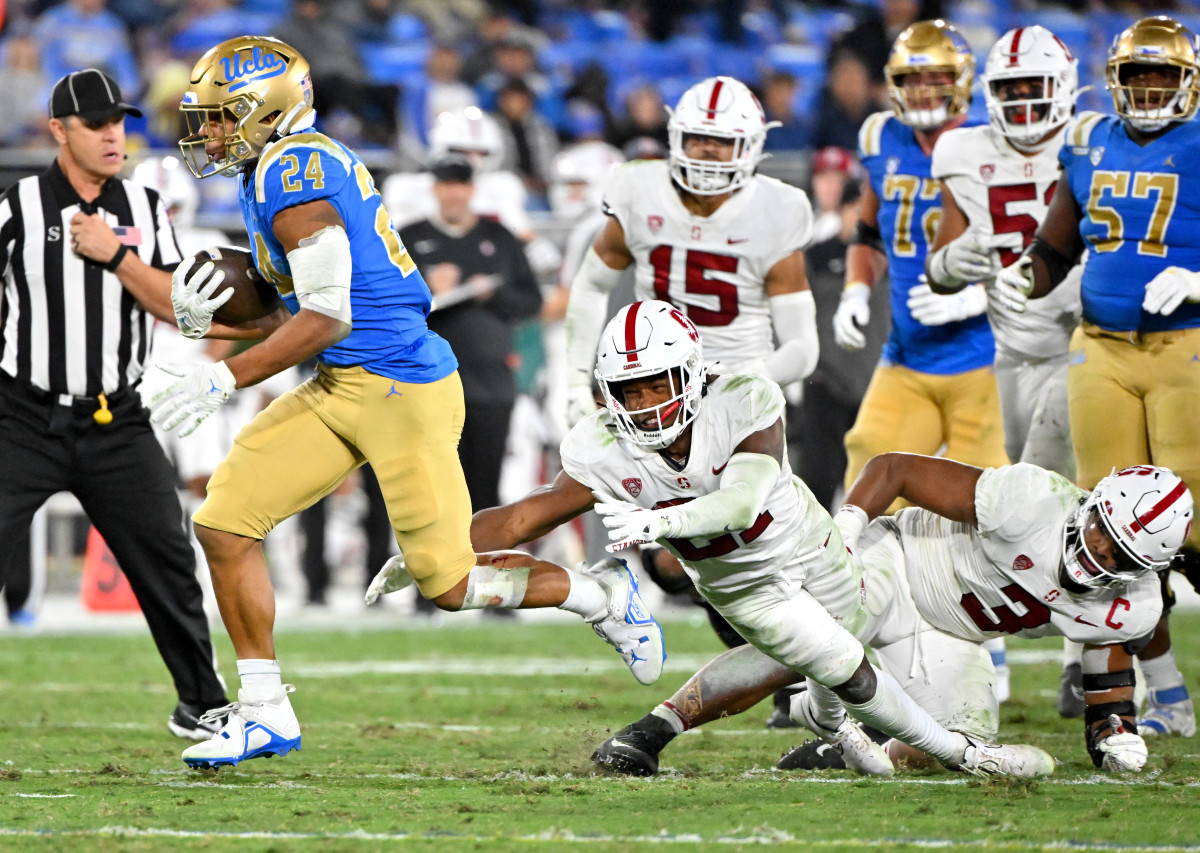What went wrong for Stanford in their blowout loss to #12 UCLA

With a chance to extend their winning streak to three, and get their season win total to four the Stanford Cardinal traveled to Pasadena to take on No. 12 UCLA on Saturday night.
Despite getting out to an early 3-0 lead, the game would never be close again after about midway through the first quarter. UCLA would answer with a quick touchdown to go up 7-3, and just a couple plays later an interception by Tanner McKee would essentially take Stanford out of the game. The Cardinal signal caller through a pick on the first play following the kickoff, and UCLA's Zach Charbonnnet would take it 23-yards for the touchdown to give UCLA a 14-3 lead and never turned back.
While it was expected that Stanford would have some struggles against what has proven to be one of the best teams in the country, it was extremely concerning at how poorly the team looked. UCLA had their way with Stanford's defense in the first half, and Stanford's offense made the Bruin's defense look like one of the best defensive units in the country.
Now that we have had a full night's sleep to sulk in the loss and think about it, here are the things that went absolutely wrong for Stanford in their 38-13 loss.
Inability to stop the run

One of my keys to Stanford winning this game was that they had to at least somewhat contain UCLA's rushing attack. Like I said then, and I'll say now. That is much easier said than done. Charbonnet is one of the best running backs in the country, and was gashing the Cardinal defense with ease. He averaged 9.4 yards per carry, and was extremely hard for the defense to bring down. In total the Bruins rushed for 324 yards.
It also didn't help that Dorian Thompson-Robinson, who was slightly banged up, was able to use his legs to move the ball on third or fourth down multiple times to extend drives. All five of UCLA's touchdowns came on the ground, and three of them came from beyond 20 yards. Whether or not they can slow down the run has been the deciding factor in all of Stanford's games this season. When they hold their opponent to 160 yards or less they are 3-0, but when they are unable to do so they are now 0-5.
Horrendous offensive line play

Tanner McKee hasn't felt this much pressure since the Cardinal played Washington, and it was evident it was hindering the offense. Plays weren't even close to being able to develop before the Bruins were chasing McKee around the backfield. He was sacked four times, and they registered four quarterback hurries. He was under duress the whole game, which is part of the reason he only completed 45% of his passes.
Whether it was the line, inexperienced running backs or both, the rushing attack served no use in this game putting all the pressure on the passing attack. The Cardinal offense averaged a measly eight yards per completion, which simply won't get the job done. David Shaw has said countless times that depending who is playing across the line that the play calling has been limited, but I honestly think this line cannot hold up against above average pass rushes. Something that will make life insanely difficult for Stanford in this final stretch.
Lack of run game

I said this before the game countless times, but Stanford's offense cannot solely rely on the passing game and expect to win. The offensive line cannot block well enough for McKee, and to be quite frank, McKee has yet to show that he can carry this team to victory with his arm. That just means the loss of Casey Filkins is that much worse when you see how ineffective the run game is without him.
Caleb Robinson and Brendon Barrow had a combined 18 carries for 69 yards, while averaging 3.8 yards per carry. When Stanford ran those slow mesh plays, the Bruin defense showed no fear that the run game would hurt them and it didn't. The injury situation at the running backs spot got even worse as Robinson went down with an injury, and it is unknown how much time he will miss. The best run threat was third string quarterback Ashton Daniels who may have to be relied on more moving forward to run the ball. When a defense knows you cannot run, it allows them to only focusing on the passing game which was already struggling as it is.
